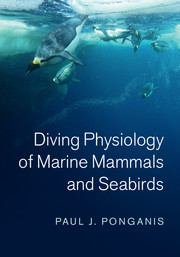Book contents
- Diving Physiology of Marine Mammals and Seabirds
- Diving Physiology of Marine Mammals and Seabirds
- Copyright page
- Dedication
- Contents
- Preface
- 1 Diving behavior
- 2 Challenges of the breath hold and the environment
- 3 Respiratory gas exchange
- 4 Oxygen storage and transport
- 5 Cardiovascular dive response
- 6 Adaptations in cardiovascular anatomy and hemodynamics
- 7 Muscle and locomotory work
- 8 Thermoregulation
- 9 Diving metabolism
- 10 The aerobic dive limit
- 11 Oxygen store depletion and hypoxemic tolerance
- 12 Pressure tolerance
- 13 Bio-medical relevance
- References
- Index
- References
References
Published online by Cambridge University Press: 05 December 2015
- Diving Physiology of Marine Mammals and Seabirds
- Diving Physiology of Marine Mammals and Seabirds
- Copyright page
- Dedication
- Contents
- Preface
- 1 Diving behavior
- 2 Challenges of the breath hold and the environment
- 3 Respiratory gas exchange
- 4 Oxygen storage and transport
- 5 Cardiovascular dive response
- 6 Adaptations in cardiovascular anatomy and hemodynamics
- 7 Muscle and locomotory work
- 8 Thermoregulation
- 9 Diving metabolism
- 10 The aerobic dive limit
- 11 Oxygen store depletion and hypoxemic tolerance
- 12 Pressure tolerance
- 13 Bio-medical relevance
- References
- Index
- References
- Type
- Chapter
- Information
- Diving Physiology of Marine Mammals and Seabirds , pp. 240 - 320Publisher: Cambridge University PressPrint publication year: 2015



